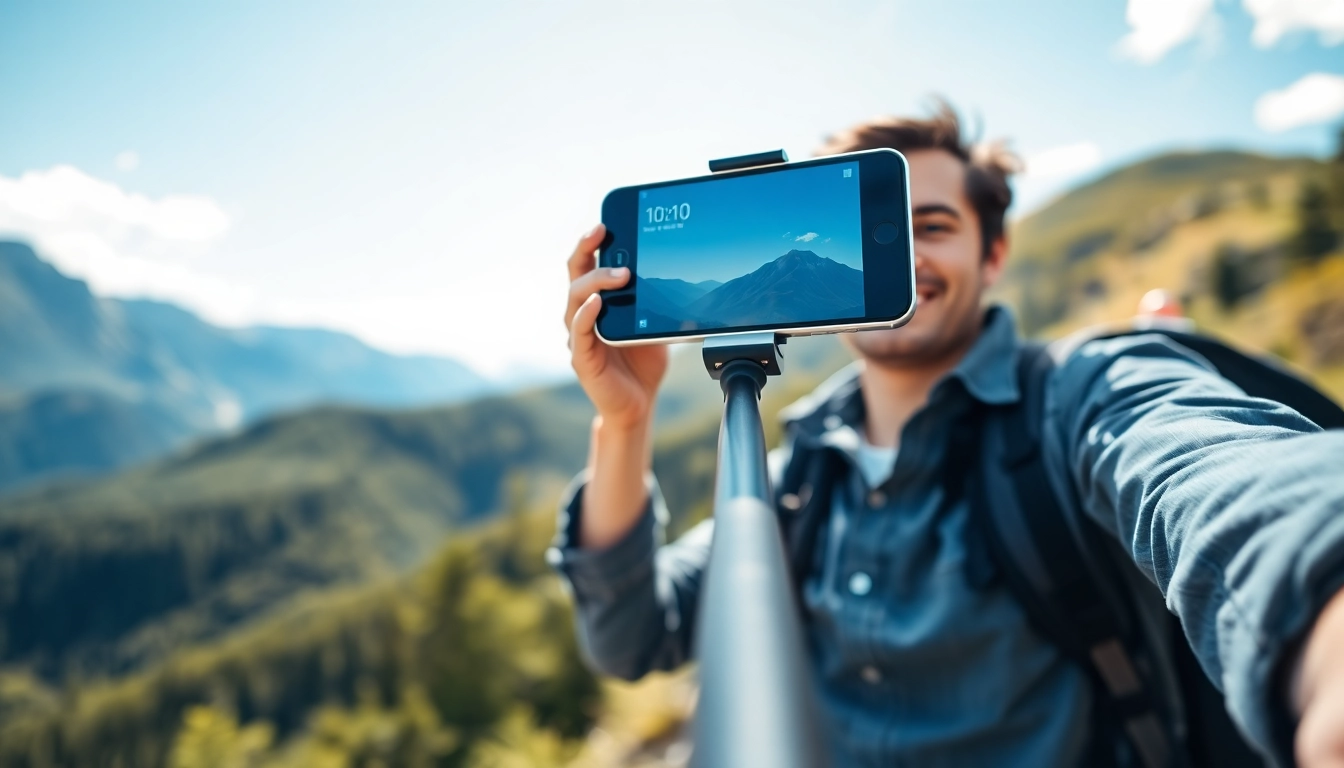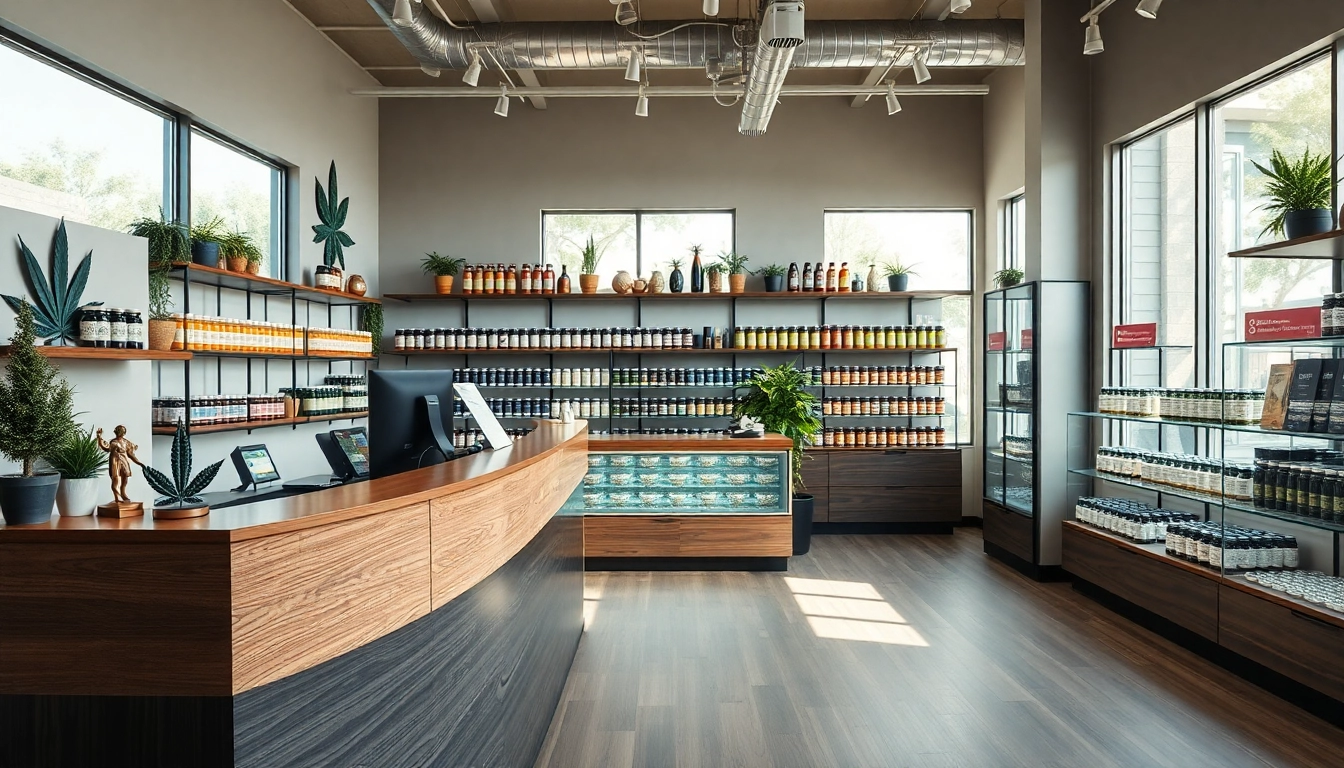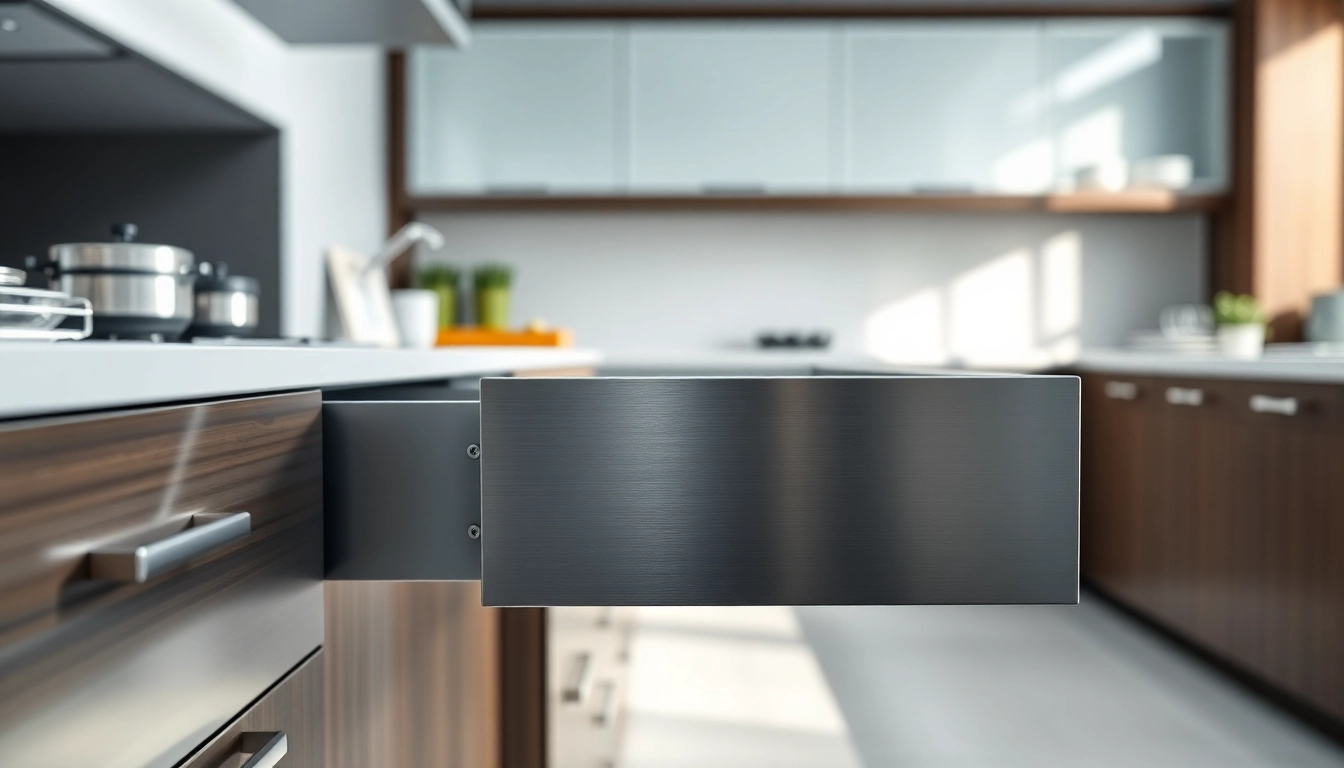Understanding the Basics of Selfie Stick
What is a Selfie Stick?
A Selfie Stick is a telescoping rod designed to hold a smartphone or camera at a distance from the user, allowing for broader and more dynamic photos, particularly popular among travelers, event-goers, and social media enthusiasts. It enhances group photos by allowing the photographer to extend the arm’s reach, which is often limited. With the rise of social media, especially platforms centered around image sharing, the Selfie Stick has become an indispensable accessory for many, enabling users to capture stunning pictures that may otherwise be difficult to obtain with a traditional self-portrait shot.
How Selfie Stick Works
The working principle of a Selfie Stick is straightforward. It typically consists of an extendable telescopic pole with a mount at one end to hold the device securely. At its other end, users can apply different mechanisms—ranging from a simple manual button to a Bluetooth remote—that trigger the camera shutter, so they can capture photos without needing to hold the device. Most modern Selfie Sticks come equipped with a Bluetooth remote that pairs with smartphones, allowing the user to take pictures from a distance without the need for an awkward reach to press the device’s shutter button.
Different Types of Selfie Stick
There are various types of Selfie Sticks available, each designed for specific needs:
- Standard Selfie Stick: Basic models that are lightweight and compact, generally used for smartphones.
- Tripod Selfie Stick: This type includes a tripod base, enabling users to stabilize their shots without holding the stick. Useful for family portraits or group photos.
- Wireless Bluetooth Selfie Stick: Equipped with a Bluetooth remote, offering greater convenience for users who prefer a hands-free approach.
- Flexible Selfie Stick: This style allows the pole to be bent and shaped for different angles and angle shots, such as wrapping around objects or adjusting for the perfect rotation.
- Action Camera Stick: A more robust design compatible with action cameras; these sticks are generally more durable and shock-resistant.
Key Features to Look for in a Selfie Stick
Material and Build Quality
The durability of a Selfie Stick is directly influenced by the materials used in its construction. Common materials include aluminum, which offers a lightweight yet sturdy design, and plastic—indicative of a more budget-friendly stick, albeit with durability concerns. Opting for a Selfie Stick built with high-quality materials ensures longevity, especially during travel when equipment is subjected to various levels of handling and weather conditions.
Adjustability and Length
When selecting a Selfie Stick, consider adjustability. The length of the stick can significantly impact photo quality. A longer Selfie Stick allows for more versatility in angles and framing. Ideally, a good Selfie Stick should extend significantly beyond your arm length; generally, models range from 20 inches to over 40 inches. Check that the locking mechanism is robust, ensuring that the pole can be secured at various lengths without collapsing under weight.
Compatibility with Devices
Compatibility with various devices is essential when selecting a Selfie Stick. Most sticks are designed to accommodate popular smartphones, such as iPhones and Android devices, but may have specific adjustable mounts or adapters to ensure a secure fit. Some high-end models also support DSLRs and action cameras, making them versatile for enthusiasts pursuing both casual selfies and professional-level photography.
How to Use Selfie Stick Effectively
Positioning and Angling Techniques
Mastering the use of a Selfie Stick involves understanding how to optimally position and angle your camera. Start with a slight upward angle; this method often enhances facial features while eliminating double chins. Also, experiment with different angles by tilting the stick slightly or moving it horizontally. Keep the camera/frame at eye level or slightly above for flattering, well-composed shots. Additionally, utilizing the stick’s reach by stepping back allows for capturing more background along with the subject, creating a vivid narrative in your photographs.
Lighting Considerations for Perfect Shots
Lighting plays a significant role in photography. Always strive to capture your selfies under natural light when possible, as it can result in more impressive and realistic effects. Avoid standing directly under harsh sunlight; instead, seek shaded areas or face towards the sunlight for a more even distribution of light across the face. If indoor lighting is necessary, consider using an external light source to brighten your photos and reduce unwanted shadows.
Creative Uses for Your Selfie Stick
Beyond standard selfies, there are multiple creative applications for a Selfie Stick. Consider using it for overhead shots at gatherings or picnics, or as a stabilizer for video recording. Experiment with different placements; for instance, secure it to a railing for unique perspectives or utilize it for capturing group shots without the fear of person cuts. Get creative with angles and set up time-lapse or panoramic shots; invest in pre-planned spaces for stunning linear imagery.
Selfie Stick Maintenance and Care
Keeping Your Selfie Stick Clean
Maintaining your Selfie Stick involves regular cleaning to keep it in good condition. For metal sticks, use a damp cloth along with mild soap and avoid harsh chemicals that might affect the finish. For plastic components, ensure that you clean the connector and grip areas to prevent dirt accumulation. Avoid using excessive moisture, and instead, aim for a dried cloth to wipe down the equipment after use, especially if exposed to dust or marine conditions.
Storage Tips for Longevity
Proper storage of the Selfie Stick is crucial in prolonging its life. Always collapse the stick before storage and keep it in its original bag or a soft case. This avoids potential damage from impacts and secures sensitive components like the Bluetooth remote or phone holder. Store it in a cool, dry place away from direct sunlight to prevent wear on materials due to heat exposure.
When to Replace Your Selfie Stick
Knowing when to replace a Selfie Stick can prevent frustration during outings and photo sessions. Common signs to observe include wobbliness during use, difficulty in extending or collapsing the stick, and wear or cracks in the material. If the locking mechanisms fail to hold the desired length consistently, or if the phone holder shows signs of strain, it’s likely time for a new model. Regularly assess your equipment and consider upgrades when they improve functionality or convenience.
Best Practices for Capturing Stunning Photos with Selfie Stick
Experimenting with Different Angles
Engaging with various angles while using a Selfie Stick can yield impactful images. Make forward, backward, and side-to-side movements to uncover unique perspectives collaborating with the immediate environment. This method is particularly helpful when capturing scenery or architectural details as part of your composition. Remember to continuously adjust your angle based on the background, context, and framing for an artistic touch in your captures.
Utilizing Natural Light
Leveraging natural light enhances the appeal of photos significantly. When shooting outdoors, try to arrange your pose so that the light source is ahead of you, ensuring even illumination over subjects. Avoid midday conditions when the sun is directly overhead, which can create harsh shadows. Consider the golden hour—sunrise or sunset—for an enhanced aesthetic, with softer light creating more visually compelling images.
Editing Photos for Enhanced Visual Appeal
Edit your pictures to add a professional finish post-capture. Use applications that provide adjustable filters or particularly enhance features like brightness and contrast. Don’t overcrowd your pictures with effects; keeping a fresh feel while highlighting the subject glows with sophistication. Edit subtly while maintaining the integrity of the original photo, focusing on emphasizing good angles and light quality for optimal presentation.



